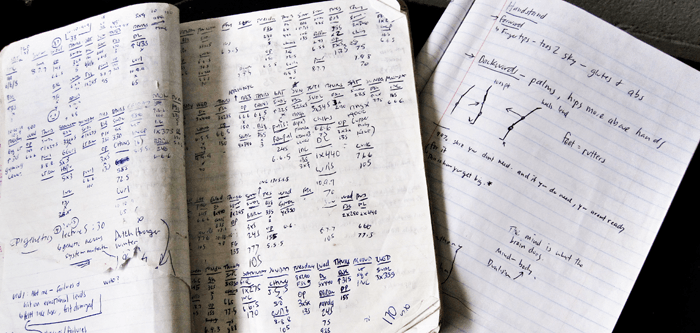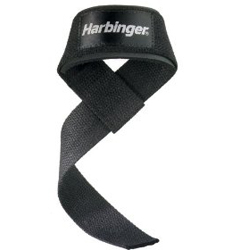Today, we will take a look at the items in our daily training bag. These items cover a wide range of training modalities including readiness prior to workout, the warm-up process, muscle activation methods, the lift, recovery set and post workout nutrition. Depending on the type of program you may be following you may not use each and every one of these items during each training session, but throughout the weeks, months, and years of dedication to the craft of training you will find yourself reaching for more of them as time goes on.
The following list has thus far been compiled over a 6-8 year timeframe of training. There may be other items more specific to your sport, occupation, or training program that may also be included. Please be sure to comment below on items that you have found success with and love in your training bag! And check back for items that may be added in the future as new research comes out.
Most of these items can be found on Amazon.com or at your local sports store, but always be on the lookout for good deals at garage sales, thrift stores and other environmentally friendly reuse! Surprisingly enough, all of these items can indeed fit into one bag (foam roller aside).
Prior to the start of the list, adequate workout gear is assumed to be ready to go and pre-workout meal eaten depending on your training goals, style and preference.
1. Training Bag
First and foremost we recommend dedicating a separate training bag for organizing your training tools. We prefer one that has a separate water bottle carrier (or two) as water leaks and shaker bottles do have tendencies to leak and let me tell you, there's nothing worse than having 225 lbs on the deadlift bar with wet chalk...
Nike Small Duffel Bag
*Note: comes in many colors as well as sizes for larger bag's if needed
Training notebook or sheets from trainer
*Note: the more you can track the better you can train!
3. Footwear
Proper footwear is pertinent to learning how your body moves in its natural form. Too often we meet with people interested in starting out on their fitness journey and we go to take their initial movement assessments and their shoes either look like they are going to fall apart, are not tied correctly, or they have relied on orthotics for so long that the arch support inside their shoes makes them more imbalanced than their natural feet do. Minimalist shoes of any kind are a training process within themselves. I recommend progressing from the shoes that you are used to wearing down to a lower and lower arch until you are able to comfortably wear a shoe, like the Converse Chuck Taylors or go in your sock feet. Start by performing your warmup routine without your shoes on for 4-6 weeks before purchasing a minimalist shoe to start your lifting. This will help your feet adjust to the new platform (or lack thereof) so your arches can stretch to their natural curvature without the support of a sturdier shoe to limit them.
In a perfect world...we wouldn't wear shoes at all....but when we are adding increasing amounts of load to our body some support is necessary.
Minimalist Shoes or Converse Low/High Tops
Converse Chuck Taylors (I prefer low tops the best as they give greater range of motion in the ankle):
*Note: Again, these come in a variety of sizes and styles for both men and women
Extra Pair of Socks: Converse No Show Socks- unisex
4. Hydration
At most facilities there are wonderful drinking fountains and water bottle fill-up stations now installed. I tend to find that people drink more water when having their own personal water bottle with them when they are training. We used to use Nalgene water bottles, but the big hype on the market right now if you do not already have one are the Hydroflask Stainless Steel water bottles. They keep your ice cold for over 12 hours and come in different sizes for your convenience and ability to measure.
Hydroflask Waterbottle
*Note: 40 oz is my favorite- if you drink two you are right around most people's daily intake!
SmartShaker
Note: for use with meal replacements and other supplements before, during, and after training. I love that these bottles twist into sections for storing one scoop of your drink powder or vitamins, etc. and if you seem to not be able to find one in the cupboard, all colors are interchangeable, so grab another!
5. Ipod/Music + Headphones
Ipod Nano
*Note: I find this one of the easiest versions to carry and hide under your clothes so headphones wires do not get in the way of your workout
6. Stopwatch or Other Monitor
Monitoring your rest periods and intervals can be really important. If there is not a good clock that can be seen from many different areas of the gym be sure to bring your own to have it handy and ready for use!
Polar FT4
*Note: there are many versions out there, but Polar is one of my favorite companies to work with. Most of their heart rate monitors also have the ability to sync with the majority of cardiovascular equipment as well.
7. Small Towel
Most gyms now offer complimentary towels at the front desk, but I have gotten in the habit of bringing by backpacking towel to the gym with me as it dries quickly and has it's own carrying case!
Microfiber Travel Towel- Hand Towel Size
8. Self Myofascial Release Tools
Most gyms now carry their own foam rollers and exercise mats and have a space dedicated to warming up. In this case, you can use the gym's foam roller (or your own if you have a special kind you like and don't mind carrying it back and forth to the gym you can do that too). So many wonderful products have came out on the market for self myofascial release and a lot of these can be purchased at the gym themselves, sporting goods stores, or even local drugstores like Target, Walmart, etc. A lot of these products, although wonderful, are very high priced. We have chosen to stick to the basics like the tennis ball, softball, golf ball, lacrosse ball, etc. that work just as good for a fraction of the price. But, check them out! A lot of fun products we have tried also come with hot and cold contrasts for additional recovery methods.
I suggest purchasing one that is a little more dense than you think you need to start because your body will progress quite rapidly in its tissue quality in the first week of starting to foam roll and you will quickly need to move on (white rollers are usually the softest and black rollers are the next firm).
Foam Roller- 12" for travel, 36" for home
*Note: there are many wonderful rollers on the market. In the picture below level 1 would be the white roller, then blue, then black, then orange, then the blues with the bumps. I talk about the "Stick" later on.
Tennis Ball
Tennis Ball "Peanut"
Softball
Lacross Ball
Golf Ball
The "Stick"
*Note: I like the shortest version possible for ease of fit in the training bag and this particular brand is by far the best I have used.
Mini TheraCane
*Note: pictured below is the mini version on the left and the full version on the right. Use the full version at home and keep mini in your training bag and use for travel as well!
9. Activation Tools
Again, depending on your level of experience and the program design you are following, the following tools may or may not be applicable. We have included the most general items that almost any lifter can benefit from, but do not feel like you need to include something in your training bag that you will not ever use for your program. Pick and choose and conquer!
Mini Bands- PerformBetter.com
*Note: from lightest to heaviest- yellow, green, blue, black. If bands are used frequently you should check regularly for holes and tears and replace every 4-6 months.
Resistance Bands- Set of 5
*Note: from lightest to heaviest- yellow, green, red, blue, purple. Most companies follow a similar color patterning for the strength of their bands, but not all. You mainly need a light, medium and heavy resistance for your training bag as these can be used for a variety of exercises.
Speed Jumprope
*Note: we prefer speed jumpropes over the rubber jumpropes as they tend to keep their shape, last longer, and provide a more intense jumprope session
Speed Stacking Cups
*Note: high school & college basketball point guard training started me in on these. Check out the Youtube videos on the world speed stacking champion and you will see why. Great activation to start the neural muscular connections!
10. Lifting Tools
Chalk
*Note: this can be ordered on Amazon.com or often found at Sports Authority near the tape and pre-wrap. Put a small block in a Tupperware container and crush or keep in a small block to run on palms. Make sure the Tupperware stays tight, or you will have a nice white gym bag to launder!
Deadlifting Straps
*Note: the Harbinger brand has the best padding I have found. Others work well until you get up to a certain amount of weight. Depending on your training program and methodology, straps are not to be worn with every lift, but that is a story for another day.
11. Recovery Tools
Stretch-Out Strap
*Note: this is one of my favorite tools for post workout. A resistance band or other piece of rope or even a gym towel can be used for the same purpose, but this rope really makes it fun to stretch with all of the different hand holds!
12. Locker Room Essentials
*Note: completely personal opinion, but some of the staples are:
Lock & Key
Towel
Flip-flops for shower
Small Travel Kit for getting ready
13. Postworkout Nutrition (within 30 mins. postworkout)
1 serving of meal replacement or real food meal
*Note: can be stored in your shaker bottle or a small personal cooler with ice pack
Now, unzip that training bag and get to that hard work you love and have prepared for!
Healthfully Yours,
Coach Allie





















